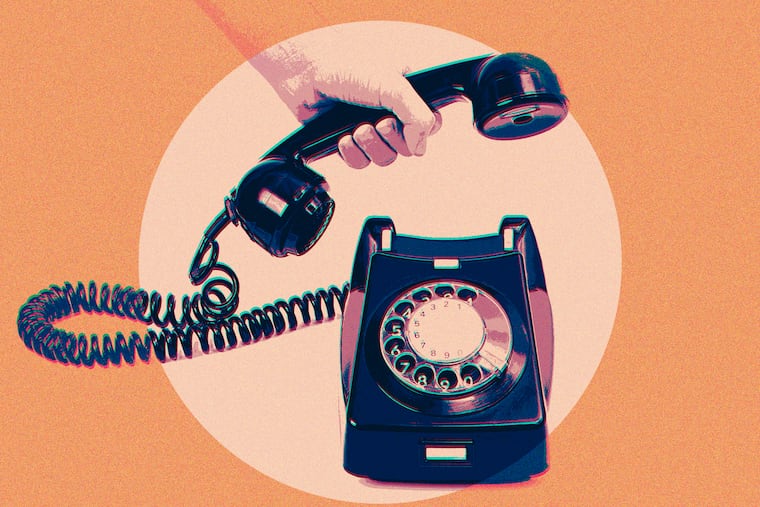Copyright The Philadelphia Inquirer

For months, Jeanne McCabe had been considering bringing back the home phone. She wanted her 10-year-old twins to be able to call their grandma or their friends but didn’t want to give them smartphones. Her son, she said, is excited by the idea and has been practicing hanging up the phone. “There is something nostalgic about it,” said McCabe, 52. “The idea of [one child] answering the phone and being like, ‘It’s for you.’” With options from traditional providers like Comcast and Verizon and newer subscription-based services like Tin Can, the process of getting an old-fashioned phone for her Lafayette Hill home ended up being more complicated than she expected, said McCabe, who works in tech. “What I’m trying to avoid is just another service, another subscription, another monthly fee,” McCabe said last week. “I feel like we’re paying out of the nose for everything.” The McCabes are among the small but growing number of U.S. families with renewed interest in old-fashioned, landline-esque phones. They see the old tech as an alternative to smartphones, which have been linked to mental health conditions, especially in young people. “[A]s more parents look to steer their children away from screens and social media, the landline phone ... is having something of a renaissance,” reporter Caitlin Gibson, wrote in a Washington Post story published last month. Home-phone owners still remain in the minority, with about 21% of U.S. adults and 13% of children having one in their home last year, according to a Centers for Disease Control and Prevention survey. Two decades ago, about 90% of U.S. households had a landline. Yet local groups like Delco Unplugged and national movements like Wait Until 8th have pushed parents to delay kids’ smartphone use until high school, citing concerns over mental health, social media, and screen time. “There’s an attention crisis. Kids are not able to focus in lectures. Kids are not reading books anymore,” Delco Unplugged founder Alex Becker told The Inquirer this summer. As parents, “we are the first line of defense.” » READ MORE: Suburban parents say they’ve been sucked into smartphone ‘whirlpool.’ Now, they want the devices out of schools. Organizations like these are hosting their first alternative-device fair in the region Sunday afternoon in Lafayette Hill, where parents will be able “to explore kid-friendly tech options,” and meet representatives from a slew of companies that sell mobile and stationary phones equipped with parental controls. How to get a home phone in 2025 As the McCabes have learned, consumers seemingly have more home-phone options than ever. But in many areas, there are few if any choices for traditional landline service. Decades ago, most homes had landline phones that were connected by copper wires. The reception was typically strong and worked even in the event of a power outage. But the Federal Communications Commission no longer requires that carriers offer copper-wired landline service. Most providers, including Comcast and Verizon, now use Voice over Internet Protocol, or VoIP, a technology that allows calls to be made over the internet instead of a traditional phone line. Philadelphia-based Comcast’s digital home phone service, called Xfinity Connect, uses VoIP and comes with a spam blocker, verified caller ID, and the ability for 911 dispatchers to automatically see a caller’s location. The service costs $40 a month. The company — which has been heavily advertising Xfinity Mobile wireless service — said “a significant number of customers” still use home phones, though popularity has declined in recent years. Along with traditional carriers, there are newfangled options like Tin Can, which operates much like an old-fashioned landline but using Wi-Fi. The corded, retro-looking phone costs $75, which includes parental controls and the ability to call other Tin Cans for free. But those who want to call any regular phone number need a $9.99 a month subscription, with the first month free. Why some people still have a home phone While some parents are drawn to home phones as a smartphone alternative for kids, others have them for different reasons. Some like having a home number as a way to filter some spam calls away from their cell phones. Others prefer the sound quality of a home phone or feel safer in the event of an emergency, even though most home phones now depend on the internet, which can be affected in power outages. In South Jersey, Sharon Burns said her family got a home phone four years ago as a precaution. In the event of an emergency, “we didn’t want to be stuck having to find a cell phone, unlock a cell phone, make sure a cell phone is charged,” said Burns, 48, of Haddon Township. It was also easy for her then-4-year-old son to use if he ever needed to call 911. “It’s really just for his safety and ours,” said Burns, though she admits they likely wouldn’t have a home phone if not for their son. They use Ooma, which she said costs them about $7 a month. Others across the region have never disconnected their home phones. Marian Hardt, 78, of Eagleview, said her home phone service is part of a Comcast bundle, and her understanding is that her total cost would actually increase if she dropped that service. Plus, “we do like having it. For some reason the quality of the sound is much better.”



